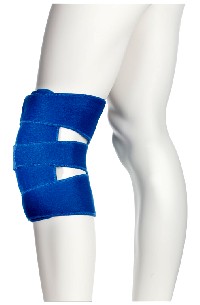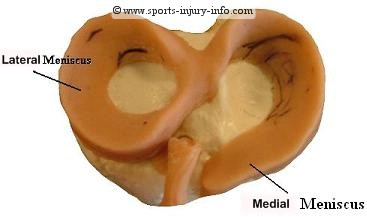Meniscus Tear Treatment:
Do You Know Where
To Start?
A meniscus tear is a common knee injury. The location and severity of
your tear will determine if you need to have surgery. Surgery or not,
though, you need to follow some basic initial treatments to get your
recovery started on the right track.Below you will find information on the different types of torn meniscus, initial treatment approaches, and surgical options.
Meniscus Tear Symptoms
A torn meniscus usually occurs with a twisting type of injury to your knee. It is very common to have a meniscal tear along with other injuries such as a torn ACL or MCL sprain.The meniscus is a piece of fibrocartilage that sits between your femur and tibia, and helps to absorb shock and stress in your knee. With twisting type motions, your meniscus can be torn, causing significant pain and swelling. You may hear or feel a pop with injury, and your knee may feel like it catches or needs to pop.
Learn more about a torn meniscus
Learn more about meniscus tear symptoms
Initial Treatment

Your physician or athletic trainer will perform a clinical exam, including specific tests to determine if you meniscus may be torn.
Two common tests are the McMurray's test and Apley's Compression and Distraction tests. With a history of how you injured your knee, how quickly it swelled, location of your pain, and other symptoms they should be able to determine your exact injury. Your physician may also recommend an MRI for the most accurate diagnosis.
Along with R.I.C.E., you can also work on keeping your quadriceps strong, and improving your range of motion following injury. This can be done with quad sets, straight leg raises, and heel slides. These exercises will help reduce swelling and pain, as well as improve your range of motion. Your certified athletic trainer or physician will should provide you with exercises to perform after your initial evaluation.
I recommend to my patients an ice compression wrap for all of their knee injuries. The combination of compression and cold therapy helps to reduce pain and swelling, and improve range of motion and function.<
Types of Meniscus Tears

Depending on the force of the injury, several types of tears can occur. Longitudinal tears involve a vertical tear along the length of the meniscus. Longitudinal tears can also become "bucket handle tears", depending on the extent of the tear.
Radial tears are another type of meniscus tear. These occur along the inside border of the meniscus. Significant radial tears can produce a flap tear, or "parrot beak tear", in which a flap of the meniscus may actually be moving into the joint space. This can often cause the catching or clicking feelings associated with meniscus tears.
Surgical Treatment Options
While some meniscus injuries may not require surgery, because of the poor blood supply of the meniscus, many tears do require arthroscopic surgery.When considering surgical procedures, you may have the option for either a meniscectomy, or removal of the torn areas of the meniscus, or a mensicus repair. The location of the tear, and the size of the tear will determine which option is best for you. Your physician will not be able to tell if a repair is possible until he begins the procedure and can examine the meniscus with the arthroscope.
Summary
Treating tears in your meniscus starts with controlling the initial swelling and pain. This is best accomplished with rest, ice, compression, and elevation.Following an evaluation with your certified athletic trainer or physician, you can begin working on simple exercises to regain your range of motion and decrease swelling.
Even with proper rehabilitation, some meniscus tears require arthroscopic surgery, because you may continue to have clicking, catching, popping, or swelling even after rehab. If you think you have suffered a meniscus tear, or have significant pain and swelling, talk with your physician or certified athletic trainer.
Didn't find what you were looking for? Search SII for more information...
Running Pain Solutions
Written for Runners by a runner, you'll learn a holistic approach to improving mobility, restoring normal movement and muscle activation patterns, and restoring the body and mind connection.
This Kindle Book contains a step by step program to keep you running pain free. Included are detailed instructions and illustrations for exercises to improve mobility, balance, neuromuscular control, strength and endurance. Only $7.49!
Get Your Copy Today!









